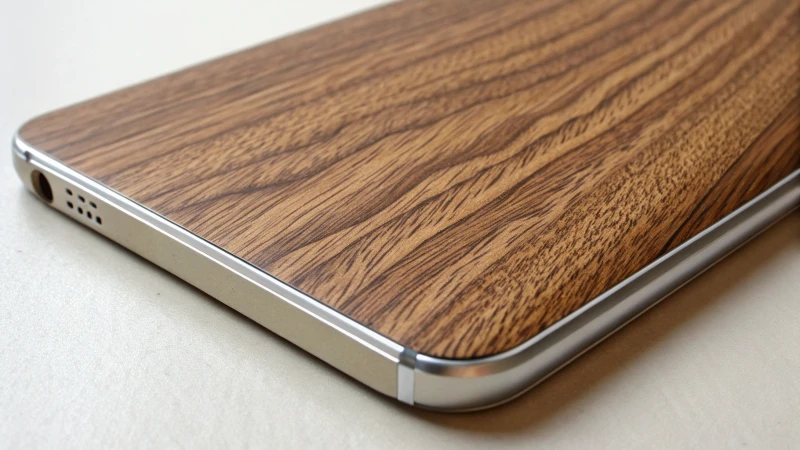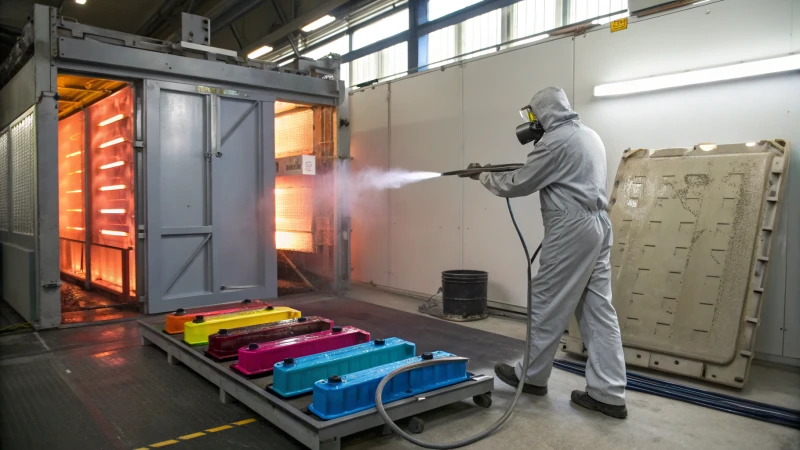How anodizing affects the lifespan of aluminum profiles?

Aluminum profiles are widely used for their lightweight and versatile properties, but how can we ensure they stand the test of time?
Anodizing enhances the lifespan of aluminum profiles by forming a protective oxide layer that increases corrosion resistance, surface hardness, and UV protection. This process can extend the life of aluminum products by up to three times compared to untreated profiles.
While this summary highlights the primary benefits of anodizing, understanding the nuances of its effects is crucial for making informed material decisions. Keep reading to discover detailed insights and practical applications of anodized aluminum.
Anodizing triples aluminum's lifespan.True
Anodizing can extend the life of aluminum products by up to three times.
Untreated aluminum resists UV better than anodized.False
Anodizing enhances UV protection, unlike untreated aluminum profiles.
What Are the Key Benefits of Anodizing Aluminum?
Anodizing aluminum transforms its surface into a decorative, durable, and corrosion-resistant finish. This electrochemical process enhances aluminum’s natural qualities, making it ideal for a variety of applications from architecture to consumer electronics.
Anodizing aluminum offers benefits like improved corrosion resistance, enhanced wear resistance, aesthetic versatility, and reduced maintenance needs. It strengthens the metal, making it more suitable for harsh environments.

Enhanced Corrosion Resistance
Anodizing creates a robust oxide layer that shields aluminum from environmental hazards such as moisture and chemicals. This protective barrier significantly increases the lifespan of aluminum products in corrosive environments. Industries like marine and construction rely heavily on anodized aluminum due to its ability to withstand salty air and other harsh conditions.
Improved Wear Resistance
The anodizing process hardens the surface of aluminum, reducing its susceptibility to scratches and abrasions. This makes it perfect for high-traffic areas or products that face constant physical interaction. For example, automotive components benefit from this increased durability, maintaining their appearance and functionality over time.
Aesthetic Versatility
Anodized aluminum can be dyed in various colors, offering designers a range of aesthetic options without sacrificing durability. The color is embedded in the anodic layer, ensuring long-lasting vibrancy. Architectural designs often utilize this feature to create visually stunning facades that maintain their allure even after years of exposure.
Reduced Maintenance Needs
Anodized surfaces are easier to clean and maintain compared to untreated or painted aluminum. The strong oxide layer resists peeling and chipping, reducing the need for frequent touch-ups. This results in lower long-term maintenance costs, making it a cost-effective solution for industries focused on longevity and reliability.
| Feature | Benefit | Application |
|---|---|---|
| Corrosion Resistance | Protects against environmental damage | Marine, Construction |
| Wear Resistance | Hardens surface to prevent wear | Automotive, Machinery |
| Aesthetic Flexibility | Enables color variety with durability | Architecture, Consumer Goods |
| Low Maintenance | Minimizes upkeep requirements | Industrial, Commercial |
Anodizing aluminum increases its corrosion resistance.True
The anodizing process creates a protective oxide layer that shields aluminum.
Anodized aluminum requires more frequent maintenance than painted aluminum.False
Anodized surfaces are easier to maintain and resist peeling and chipping.
How Does Anodizing Improve Corrosion Resistance?
Anodizing is a game-changer for aluminum products, offering unmatched corrosion resistance. Discover how this process extends the lifespan of aluminum through an electrochemical transformation that fortifies its surface.
Anodizing enhances corrosion resistance by forming a thick oxide layer on aluminum, protecting it from environmental factors like moisture and salt. This process significantly extends the material’s lifespan in harsh conditions.

The Science Behind Anodizing
Anodizing is an electrochemical process that converts the surface of aluminum into a durable, corrosion-resistant oxide finish. This oxide layer is part of the aluminum itself, not an
applied coating, which means it won’t peel off.
The Role of the Oxide Layer
The oxide layer formed during anodizing acts as a barrier to corrosive elements. It protects aluminum from moisture, chemicals, and other environmental
conditions that typically induce corrosion. Unlike paint or plating, the anodic layer is integral to the metal, providing enhanced durability.
Benefits for Different Industries
- Construction: Anodized aluminum profiles are used extensively in buildings, especially in coastal regions. They resist salt corrosion better than untreated materials.
- Automotive: Anodizing in automotive applications offers protection against wear and corrosion, crucial for parts exposed to road salt and moisture.
Comparing Anodizing with Other Treatments
| Treatment Method | Durability | Maintenance | Cost |
|---|---|---|---|
| Anodizing | High | Low | Moderate |
| Painting | Medium | High | Low |
| Plating | Medium | Medium | High |
Environmental and Economic Impacts
Anodizing is eco-friendly as it enhances aluminum’s natural properties without using hazardous substances. The reduced maintenance costs over the lifespan of
products make it an economically viable option for manufacturers seeking long-term benefits. See how anodizing impacts industries.
By examining these factors, one can appreciate how anodizing not only improves corrosion resistance but also offers multifaceted benefits across various sectors.
Anodizing forms a removable oxide layer on aluminum.False
The oxide layer is integral to the aluminum, not removable.
Anodizing reduces maintenance costs over a product's lifespan.True
It enhances durability, reducing the need for frequent repairs.
Can Anodizing Affect the Appearance of Aluminum Profiles?
Anodizing aluminum profiles can significantly alter their appearance, adding aesthetic value and functional benefits. But how exactly does this process influence visual characteristics like color and texture? Let’s explore the effects.
Anodizing affects aluminum profiles by enhancing color vibrancy, improving surface texture, and providing a range of finishes from matte to glossy. This process can elevate the aesthetic appeal while maintaining durability.

Color Vibrancy and Variety
Anodizing allows for a wide array of color options. By adjusting the dye used in the process, manufacturers can achieve various shades and hues, from subtle tones to vibrant colors. This flexibility makes anodized aluminum
popular in industries like architecture and automotive, where customization is key.
For instance, a construction company might choose anodized profiles for window frames to match the building’s overall design.
Surface Texture: Smoothness to Roughness
The anodizing process can enhance the surface texture of aluminum profiles. Depending on the pre-treatment and anodizing method used, the finish can be smooth or slightly textured, impacting the tactile feel and visual appearance.
A smooth finish is often preferred for decorative elements, while a textured surface might be desirable for functional components like grip-friendly railings.
Glossy or Matte Finishes
Anodizing provides finishes ranging from high-gloss to matte, allowing designers to choose based on aesthetic preferences or functional needs. A glossy finish can make profiles stand out, reflecting light beautifully, whereas a matte
finish might be selected for a more understated look.
This versatility makes anodized aluminum suitable for modern interior designs and exterior architectural applications.
Consistency in Appearance
One of the main advantages of anodizing is the consistency it offers. Unlike paint, which can chip or peel, the anodized layer is integral to the metal surface. This results in a uniform appearance that maintains its look over time.
Such reliability is crucial in products where appearance directly impacts perception, such as consumer electronics casings.
| Finish Type | Description | Ideal Use Cases |
|---|---|---|
| Glossy | Reflective, shiny | Architectural features, furniture |
| Matte | Subdued, non-reflective | Industrial parts, electronics |
| Textured | Slightly rough feel | Handrails, outdoor structures |
| Colored | Vibrant or subtle shades | Automotive parts, art installations |
Anodizing only offers matte finishes for aluminum.False
Anodizing provides both glossy and matte finishes, offering design flexibility.
Textured anodized aluminum is ideal for grip-friendly applications.True
Textured surfaces enhance grip, making them suitable for railings and similar uses.
What Role Does Anodizing Play in Wear Resistance?
Anodizing significantly enhances the wear resistance of aluminum by creating a hard, protective layer on its surface. This process is crucial for applications where durability is paramount, making anodized aluminum a top choice for high-traffic areas and industrial uses.
Anodizing increases wear resistance in aluminum by forming a hard oxide layer on its surface. This layer protects against abrasion and extends the lifespan of aluminum components, making them suitable for demanding environments.

Understanding Anodizing and Wear Resistance
Anodizing is an electrochemical process that converts the metal surface into a decorative, durable, corrosion-resistant oxide finish. For aluminum, this process is particularly important in enhancing wear resistance, which is critical in applications subjected to frequent physical contact or abrasive environments.
| Factor | Impact on Wear Resistance |
|---|---|
| Oxide Layer Thickness | Thicker layers provide better protection against abrasion and wear. |
| Surface Hardness | Increases significantly, improving durability against physical damage. |
How Anodizing Works
The anodizing process involves immersing aluminum into an acid electrolyte bath and passing an electric current through the medium. This results in a thick oxide layer that is integral to the metal surface, providing enhanced protection.
The thickness of this oxide layer can be controlled during the process, allowing customization of wear resistance properties according to specific needs. This adaptability makes anodized aluminum suitable for various industrial applications.
Real-World Applications
In industries like aerospace and automotive, anodized aluminum components are favored due to their improved wear resistance. These components can withstand harsh conditions, reducing maintenance needs and extending their operational life. In high-traffic environments, such as public transport or architectural structures, the durability of anodized surfaces ensures long-lasting performance.
Anodizing increases aluminum's wear resistance.True
Anodizing forms a durable oxide layer, enhancing wear resistance.
Thicker oxide layers decrease aluminum's wear resistance.False
Thicker oxide layers actually improve wear resistance by reducing abrasion.
How to Ensure Quality in the Anodizing Process?
Quality control in anodizing is crucial for ensuring durable and aesthetically pleasing aluminum products. Learn the essential steps to maintain high standards in anodizing.
Ensuring quality in the anodizing process involves meticulous surface preparation, controlling anodizing bath conditions, consistent monitoring of parameters, and thorough quality checks post-process. Adhering to these best practices helps produce reliable and durable anodized aluminum products.

Importance of Surface Preparation
Proper surface preparation is the foundation of a successful anodizing process. Cleaning and degreasing aluminum surfaces remove contaminants that can affect the oxide layer’s uniformity. Mechanical processes like polishing and etching prepare the surface for optimal adhesion of the anodic film.
Controlling Anodizing Bath Conditions
The conditions of the anodizing bath—temperature, pH, and chemical concentration—must be precisely controlled. Consistent parameters ensure a uniform oxide layer thickness.
| Parameter | Ideal Range |
|---|---|
| Temperature | 20-22°C |
| pH Level | 6.0-7.0 |
| Acid Concentration | 15-20% |
Variation in these can lead to defects like pitting or discoloration.
Monitoring Parameters Consistently
Continuous monitoring of voltage, current density, and time is critical. Automated systems can help maintain accuracy, ensuring each batch meets the desired quality standards.
- Voltage: Adjusted according to desired oxide layer thickness.
- Current Density: Affects the rate of oxide formation.
Post-Anodizing Quality Checks
After anodizing, quality checks are essential to verify that the product meets specifications. Tests include measuring oxide thickness, checking for color consistency, and ensuring the absence of defects like burns or streaks.
Training and Standard Operating Procedures (SOPs)
Implementing detailed SOPs ensures that every technician follows the same process guidelines. Regular training sessions keep staff updated on new techniques and technologies, enhancing process reliability.
For those looking to deepen their understanding, consulting resources on anodizing technology is recommended. This exploration can provide insights into advanced techniques for achieving optimal results.
Proper surface preparation affects oxide layer uniformity.True
Surface contaminants can disrupt oxide layer adhesion, affecting uniformity.
Anodizing bath temperature should be 25-27°C for best results.False
Ideal temperature is 20-22°C; higher temperatures can cause defects.
Conclusion
Anodizing aluminum profiles significantly enhances their lifespan by improving corrosion and wear resistance, UV protection, and reducing maintenance needs, extending durability up to three times compared to untreated profiles.


